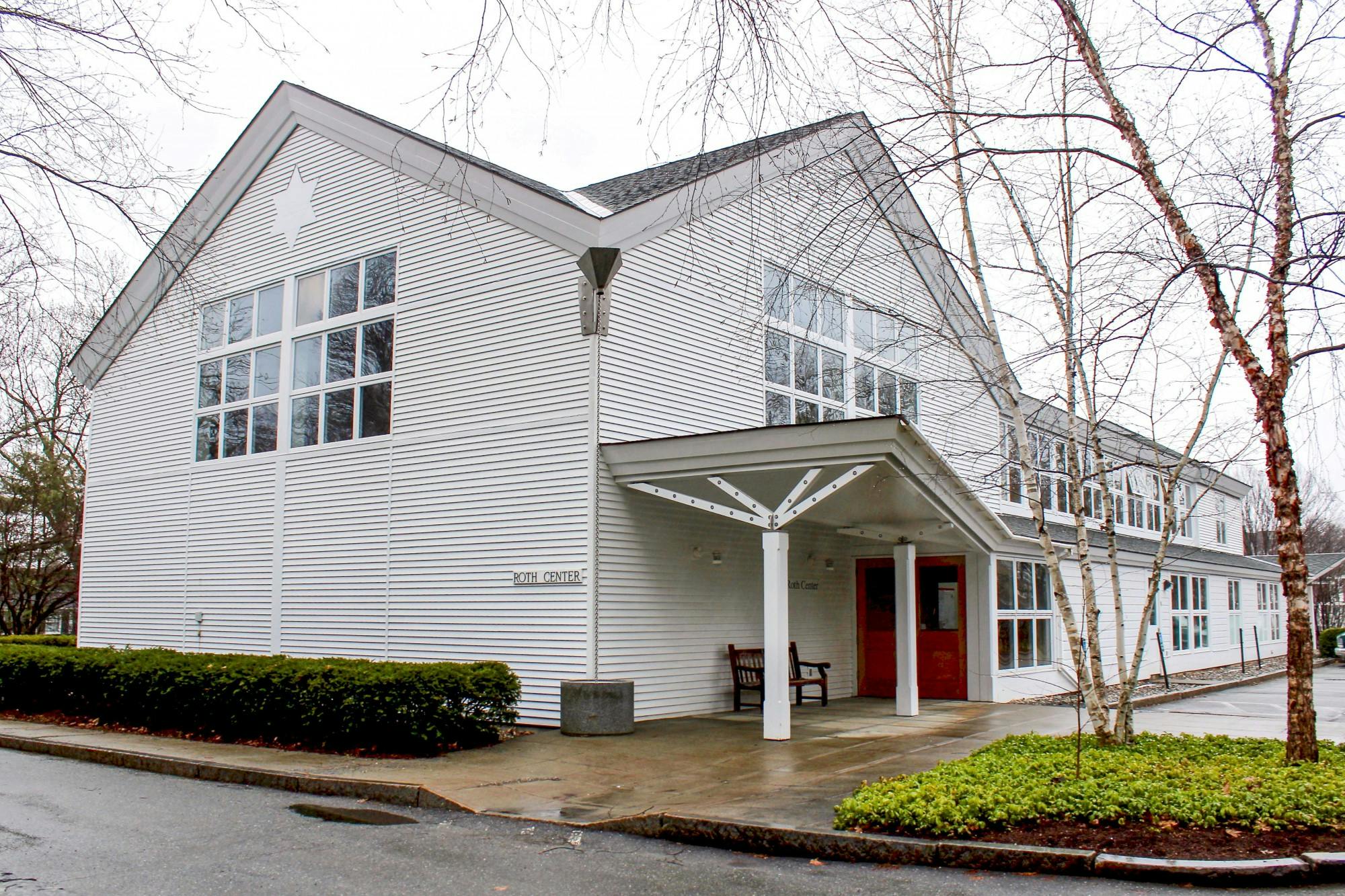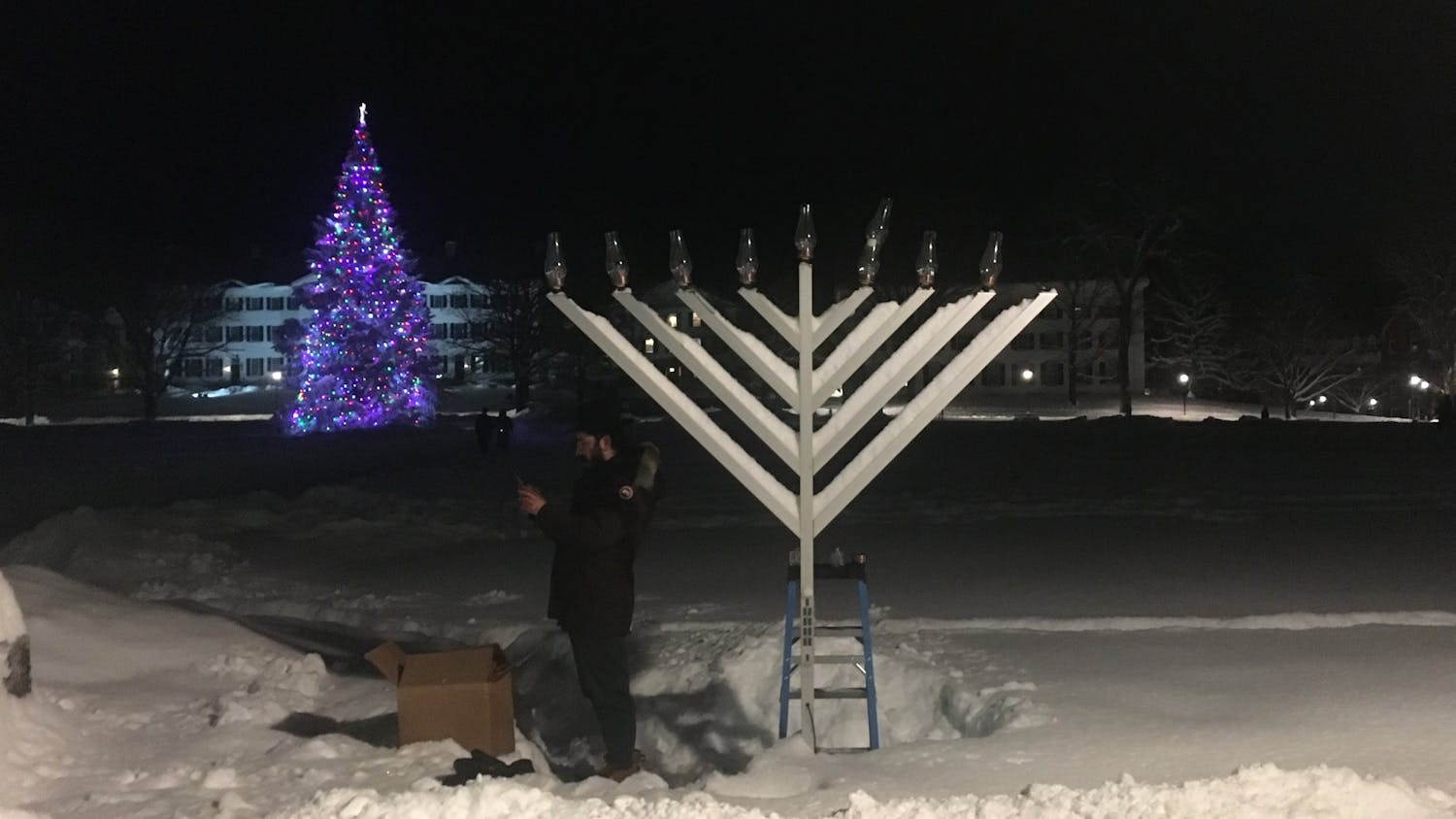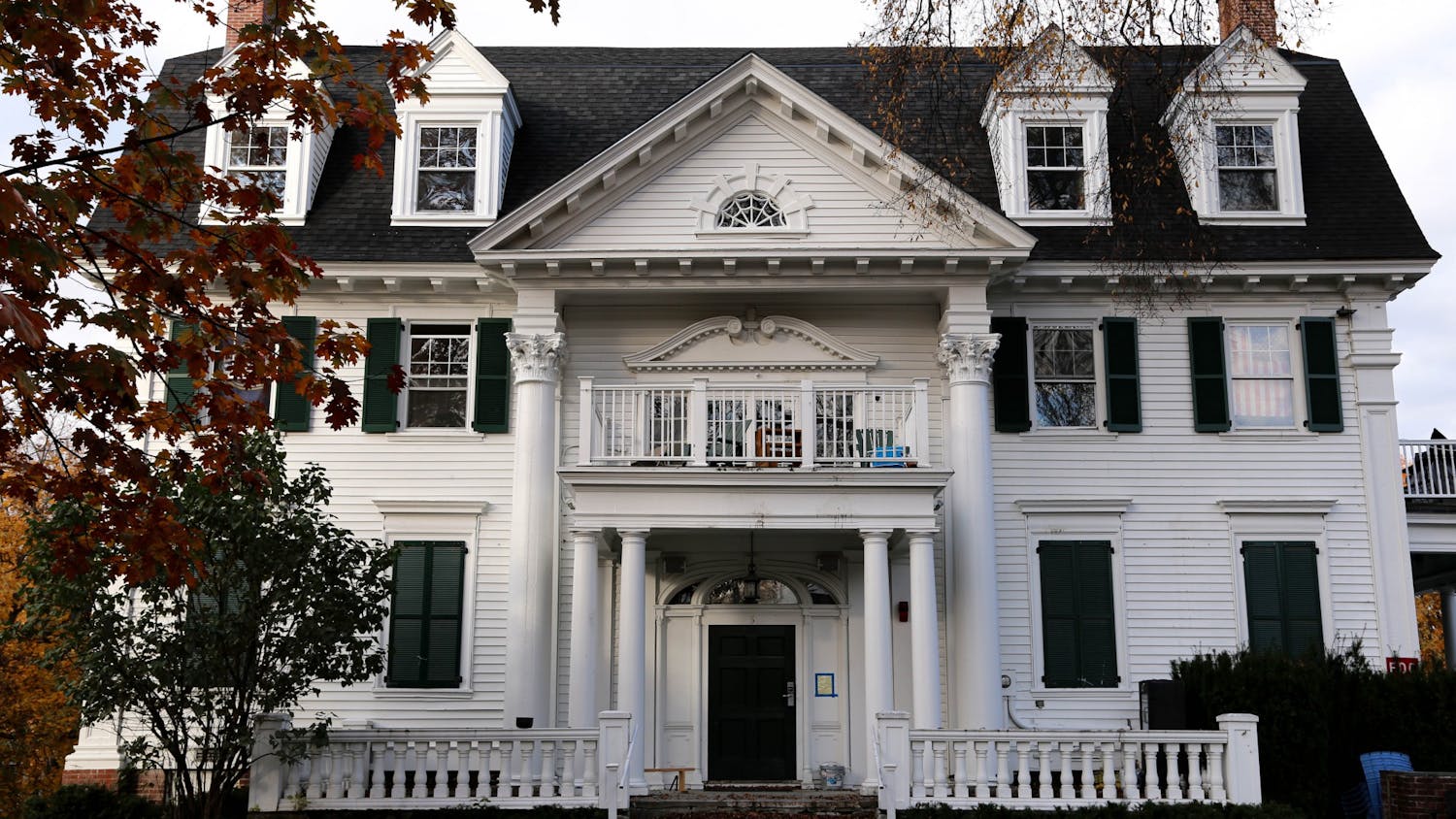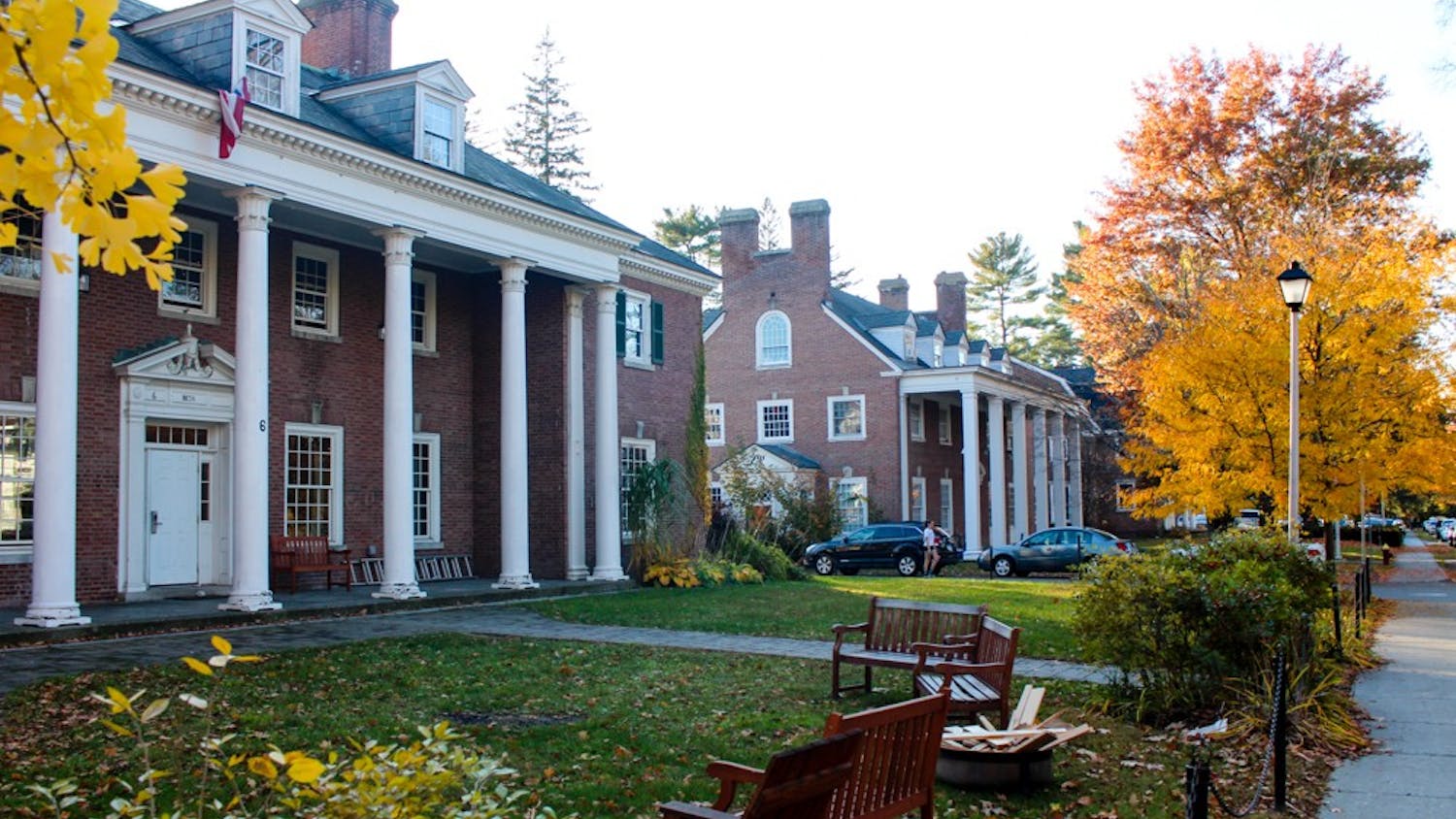In 1934, Ford Wheldon ’34 felt compelled to air a grievance to the College.
“The campus seems more Jewish each time I arrive in Hanover,” Wheldon wrote to dean of admissions Robert Strong. “And unfortunately many of them (on quick judgment) seem to be the ‘k—’ type.” Strong wrote back, agreeing with Wheldon on “the Jewish problem” and assuring him that if the Class of 1938 were more than 5% to 6% Jewish, he would “be grieved beyond words.”
Today, Hillel estimates that about 10% of the College’s student body is Jewish. Chabad, Hillel and the Roth Center for Jewish Life provide community for Jewish students, Rabbi Daveen Litwin heads the Tucker Center and Jewish studies classes attract hundreds of students every year.
But for some, the vandalism of the Chabad menorah in early December was a reminder that the “Dartmouth bubble” has not always included Jewish students, harkening back to the days when the admissions office maintained quotas for the number of Jews in each class, academic departments sought to hire mainly Protestants and most fraternities barred Jewish students from membership.
“Incorrigibly anti-Semitic”
At the turn of the 20th century, Dartmouth had far fewer Jewish students than peer institutions located in immigrant-rich cities: One estimate from the early 1900s found that 4% of Dartmouth’s student body was Jewish compared to 20% at Harvard. Those who did venture to Hanover faced discrimination on campus.
“There are probably not more than two or three Jews in the College who are fraternity members, and apparently there must be something very particular to recommend him to get one in,” stated a 1911 letter on Dartmouth Alumni Magazine letterhead located today in the Rauner Special Collections Library. A 1916 Harper’s Weekly article noted that some Dartmouth fraternities had “Aryan” clauses “to keep out the Jews.”
In 1921, then-College president Ernest Hopkins instated a selective admissions system that ostensibly sought geographic, economic and racial diversity, or “proportionate selection.” In practice, it was used to limit the number of Jewish members of each class.
Hopkins rejected a 1933 suggestion to increase Jewish enrollment because “life is so much pleasanter in Hanover, the physical appearance of the place is so greatly benefited and friends of the college visiting us are so much happier with the decreased quota of the Hebraic element.” He acknowledged in a 1934 letter that Jewish applicants were rejected at a higher rate than non-Jewish applicants so that the College would not be “overrun racially.”
“They wanted to keep the flavor of the place white,” Chabad Rabbi Moshe Leib Gray said. “… It was tokenism. That’s what I understand that quota to be back in the day — that we can tolerate, you know, 15 to 20 Jews on campus amid 500 [students] per class.”
The quotas — which were present at most universities at the time, Jewish studies professor Susannah Heschel and Gray both noted — eventually drew controversy at the end of World War II as details of the Holocaust became known worldwide and sparked backlash against anti-Semitism.
A New York Post article from August 1945 publicized Dartmouth’s discrimination. The Post obtained a letter from Hopkins to an alumnus that argued removing the quotas would “arouse widespread resentment” against Jewish students on campus, using statistics from Nazi government officials to support his claims.
Heschel said this amounted to blaming the presence of Jews for the existence of anti-Semitism, a propaganda line used by Adolf Hitler himself in his anti-Semitic screed “Mein Kampf.”
After the publication of the Post article, alumni and faculty demands for change mounted. One alumnus called the fraternities “incorrigibly anti-Semitic” in a letter, and faculty members introduced resolutions urging the abandonment of the quota system.
Hopkins’s successor, John Sloan Dickey, ultimately conceded and dropped the quota system, resulting in a sharp increase in the number of Jewish students admitted to Dartmouth. A 1954 confidential memorandum sent by Dickey to the Board of Trustees reported that the percentage of Jewish students in each class had risen to around 15% — but also revealed that the Dartmouth community still contained copious anti-Semitism.
“There are, of course, individuals on the faculty and staff who would frankly be happier with no Jews or as few as possible,” Dickey wrote, though he stressed that it was not a “large sector.”
Greek life: “We were excluded”
Despite the reversal of anti-Semitic admissions policies, Jewish students at the time still recall a largely segregated Greek system.
“We were excluded not because we were tall, short, white, yellow, or this, or that, et cetera, were good students, were poor students, lived in a dorm — we were Jewish,” Michael Norman ’61 Med’63 said.
Norman pledged Pi Lambda Phi fraternity, which along with Tau Epsilon Phi was one of two predominantly Jewish fraternities. Jewish students, he said, “did not pledge anywhere else, nor were they invited to pledge anywhere else.”
“I don’t know what was in the minds and hearts and parental education of other students,” he said. “They just — we were different.”
He and several other Jewish students founded the Jewish Life Council in the ’50s, a forerunner to Hillel. One major issue they faced was the lack of a space in which to celebrate the Jewish high holidays; Rollins Chapel denied their request to temporarily convert to a non-denominational space without giving a reason. Norman said that the chapel never relented during his six years at Dartmouth, but that more progress was made in convincing the dining hall to carry foods like bagels and smoked salmon during the Jewish holidays.
Ted Tapper ’61 Med’62 noted that TEP and Pi Lamb did not have discriminatory clauses in their constitutions, so both fraternities had Black members in addition to Jewish members.
“There were many fraternities — I would say most fraternities — that had no Blacks and no Jews, and maybe they excluded Catholics too, for all I know,” he said.
All Greek houses did eventually eliminate discriminatory clauses in the ’50s and ’60s, a move that required some to “go local” and break from national chapters that sought to maintain segregation.
Tapper remained unaffiliated while at Dartmouth and stressed that he never experienced “overt anti-Semitism” like cross burnings, but did say the lack of Jewish faculty at the Protestant-dominated College was notable.
English professor James Heffernan, who arrived at Dartmouth in 1965, said that he recalled only two tenured Jewish professors at the time, one of whom, mathematics professor John Kemeny, became president of Dartmouth in 1970. Heffernan said that when he, himself, achieved tenure in 1970, he was only the second Catholic in the department to do so. The first Jewish professor to achieve tenure in English, he said, did so in the mid-1970s.
Retired history professor Gene Garthwaite, who taught from 1968 to 2011, said that the lack of diversity differed depending on the department, adding that he remembered several Jewish faculty members.
“Some departments, even when I arrived in ’68, were very much old-school, old-boy kinds of places, whereas the history department was very progressive and forward-looking,” Garthwaite said.
Prejudice (mostly) yields to community
Despite small steps forward, discrimination persisted into the ’80s and ’90s. Researcher Tamar Buchsbaum wrote in a 1987 Jewish Social Sciences article that a “negative perception of the college among American Jews” stemmed from the legacy of the quotas, the lower Jewish population relative to other Ivy League schools and negative press surrounding the 1982 destruction of a sukkah — a structure used during the Jewish festival of Sukkot — on campus.
Heschel said that unofficial discrimination in certain academic fields, such as engineering and Renaissance literature, continued well into the 1990s and affected Jews as well as other minorities.
“Renaissance literature was viewed as something very Christian, and Jews oughtn’t be in that field,” she said.
In 1988, a column in The Dartmouth Review likened then-College president James Freedman’s policies toward conservatives on campus to the Holocaust and caricatured Freedman, who was Jewish, as Hitler. After the column made national headlines, the editor at the time denied that it was anti-Semitic in an interview with The New York Times, suggesting that the paper’s critics were “trying to twist the issue to their own ends.”
Gray disagreed.
“Comparing anything to the Holocaust, especially today … belittles the Holocaust and belittles what you’re trying to compare to the Holocaust,” Gray said.
Two years later, the Review printed a quote from “Mein Kampf” about “warding off the Jews” just before Yom Kippur. The incident led to the resignation of the editor-in-chief and two staffers, a campus rally against the Review and an investigation by the Anti-Defamation League of B'nai B'rith that blamed “the creation of an environment which condoned and even encouraged a member of the Review to include the offensive Hitler quote.”
Heschel said that these incidents, which led a smaller presence for the Review on campus for several years after, were part of a pattern of mistreatment of Freedman that included fraternities dumping garbage on his lawn.
Garthwaite said that after one of the “shockingly abhorrent” Review incidents, he and around a hundred other members of the faculty planned a surprise party for the Freedmans, who were returning from out of town, to help them feel welcomed on campus again.
Freedman later gave a speech at the 1997 opening of the Roth Center that exposed and condemned many of Dartmouth’s past anti-Semitic practices and incidents. In a 2000 Chronicle of Higher Education column reflecting on the speech, he emphasized that he believed Jewish students were now full members of the Dartmouth community.
Anti-Semitic incidents, however, continued into the new millennium. 1998, 1999 and 2002 saw anti-Semitic graffiti and mailings directed at Jewish students, and in 2004, the website of Al-Nur, Dartmouth’s Muslim student association, was revamped after anti-Semitic passages were found on it.
The last decade has seen at least two controversies related to alleged anti-Semitism on the part of professors. In 2016, Rutgers University women and gender studies professor Jasbir Puar gave a speech at Dartmouth about the Israeli occupation of Palestine that some students and professors deemed anti-Semitic because of what they called unfair or untrue criticisms of Israel. In 2017, Native American studies professor N. Bruce Duthu declined his appointment to dean of faculty after some Jewish professors and students raised questions about his authorship of a 2013 letter supporting the “Boycott, Divestment and Sanctions” movement, which seeks to encourage organizations to cut ties with Israel.
Members of the Jewish community today agree that Dartmouth bears little resemblance to its past in terms of anti-Semitism.
“Dartmouth is such a bubble when it comes to many things, but I definitely think when it comes to anti-Semitism as well,” Hillel president Becky Milner ’21 said. “As someone who has been practicing and observantly Jewish for their entire life, it honestly has not been something I’ve experienced on this campus.”
Chabad president Alec Kaplan ’21 said that Dartmouth’s community is especially tolerant when compared to what he hears about other schools, where he said students he knows have recently been the victims of verbal attacks and vandalism and where anti-Semitism and criticisms of Israel “go hand-in-hand.”
Heschel highlighted the close relationships at Dartmouth between the Jewish studies and Middle Eastern studies departments and Jewish and Muslim student organizations, the admissions office’s efforts to increase recruitment from Jewish day schools and the broad collection of student who take Jewish studies of classes as evidence that Dartmouth presents a “friendly and welcoming environment.”
“I think that, honestly, while we can talk about Hopkins and everything that happened in the past and The Dartmouth Review,” Heschel said, “the bottom line is we have a better situation at Dartmouth for Jewish students than any other college I can think of.”
Correction appended (Jan. 12, 2021): A previous version of this article inaccurately paraphrased a quote from Kaplan. The sentence, which implied that he believes people at Dartmouth can respectfully criticize Israel without being anti-Semitic, has been removed.





